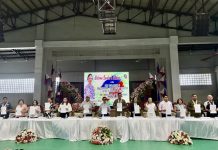TACLOBAN CITY – The Philippine Red Cross (PRC) will carry out a $363 million recovery projects in areas hit by supertyphoon Yolanda. Gwendolyn Pang, PRC secretary general, said that responding to early recovery needs of Yolanda survivors is their biggest rehabilitation projects, which involves millions of Filipino and foreign volunteers. The project, with a funding support of 320 million Swiss Francs (US$363 million), will run for three years. It will primarily help survivors rebuild their shattered lives and enhance the PRC’s capacity to respond to future disasters through training for volunteers. “So far, this is the biggest work that we are going to do in terms of recovery. This is eight or 10 times bigger compared to other disasters in the country. We have put in a lot of preparatory work for that for us to be able to meet that magnitude work needed,” Pang told reporters. Specifically, recovery works would focus on restoring shelter, livelihoods, education, disaster risk reduction and access to health care, to help affected communities overcome the hardships of the past six months and restore self-reliance. For permanent housing alone, 40,000 homes will be built and 50,000 units will be repaired, according to Pang. “This response is very wide in terms of area affected. Many people come to work and help the Philippines. Red Cross is contributing not less than 25 % of full recovery in our country, making us the key player here. We are supported by the whole Red Cross with Crescent Movement internationally,” Pang said. Since the disaster struck, the PRC, together with the International Federation of Red Cross and Red Crescent Societies (IFRC), the International Committee of the Red Cross (ICRC) and over 50 national societies from around the world have been sending aid for all areas hit by Yolanda. These were emergency relief, including food, shelter items and cash to more than one million people. Thousands more received medical attention from Red Cross emergency facilities. The Red Cross and Red Crescent Movement distributed cash grants to 75,000 families and met 25% of the emergency shelter needs of survivors, providing tents, tarpaulins and other materials to almost 140,000 households. (SARWELL Q.MENIANO)



